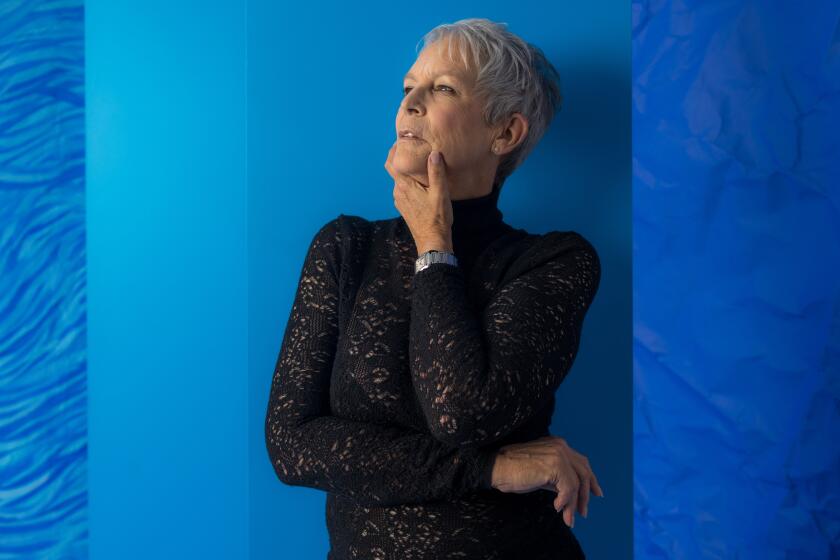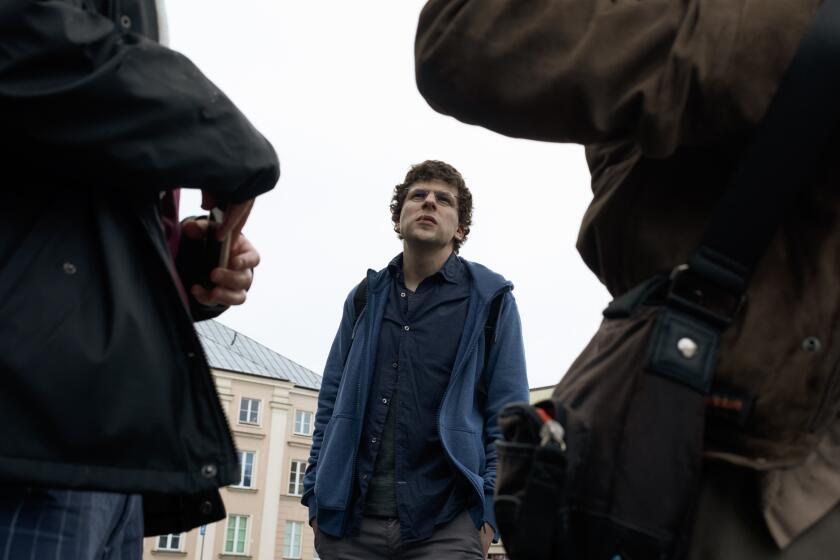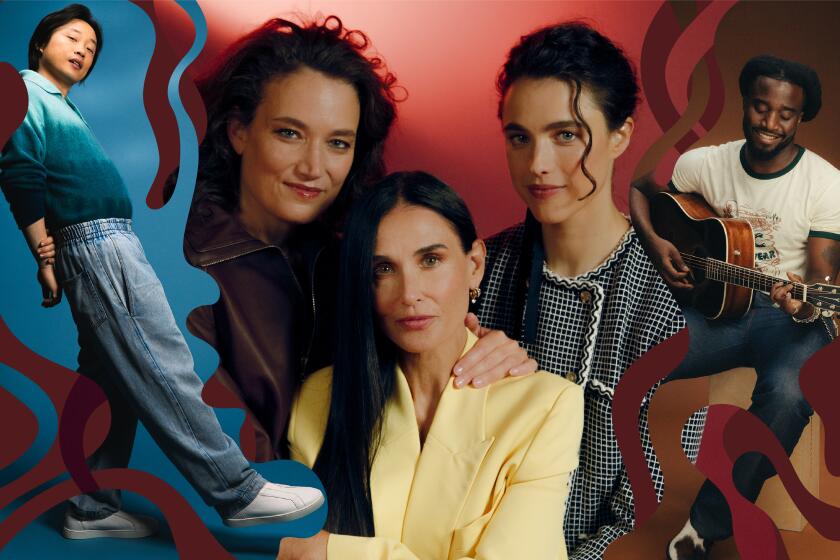Is ‘Burden of Dreams’ the greatest making-of doc ever? Plus the week’s best movies

Hello! I’m Mark Olsen. Welcome to another edition of your regular field guide to a world of Only Good Movies.
Greetings from Toronto, where I am part of the LAT team covering the Toronto International Film Festival. To keep up with all our coverage from the festival, subscribe to The Envelope: TIFF Daily newsletter. (But keep reading this one too!)
For that newsletter’s first issue, I spoke to Cameron Bailey, chief executive of TIFF, and Anita Lee, the festival’s chief programming officer, before the launch of this year’s event. Alberto Barbera, artistic director of the Venice Film Festival, recently took a few public jabs at TIFF in an interview, breaking the diplomatic relationships between the highly competitive fall festivals.
Bailey responded by saying, “All of us who run festivals are trying to find the best movies we can and present them to audiences and to really show how important it is to be able to bring films to film culture and to the industry, the business of film. … We all have our different ways of doing it. We might describe it in different ways, but I think in a world where people have so much more choice than they used to, and are sometimes paralyzed by that choice, festivals become especially important because you want to know, OK, what are the key films that I have to pay attention to this year? What are the ones that are going to be most worth talking about, most exciting, most transformative? We’re all trying to do that at film festivals and I think that’s something to be celebrated.”
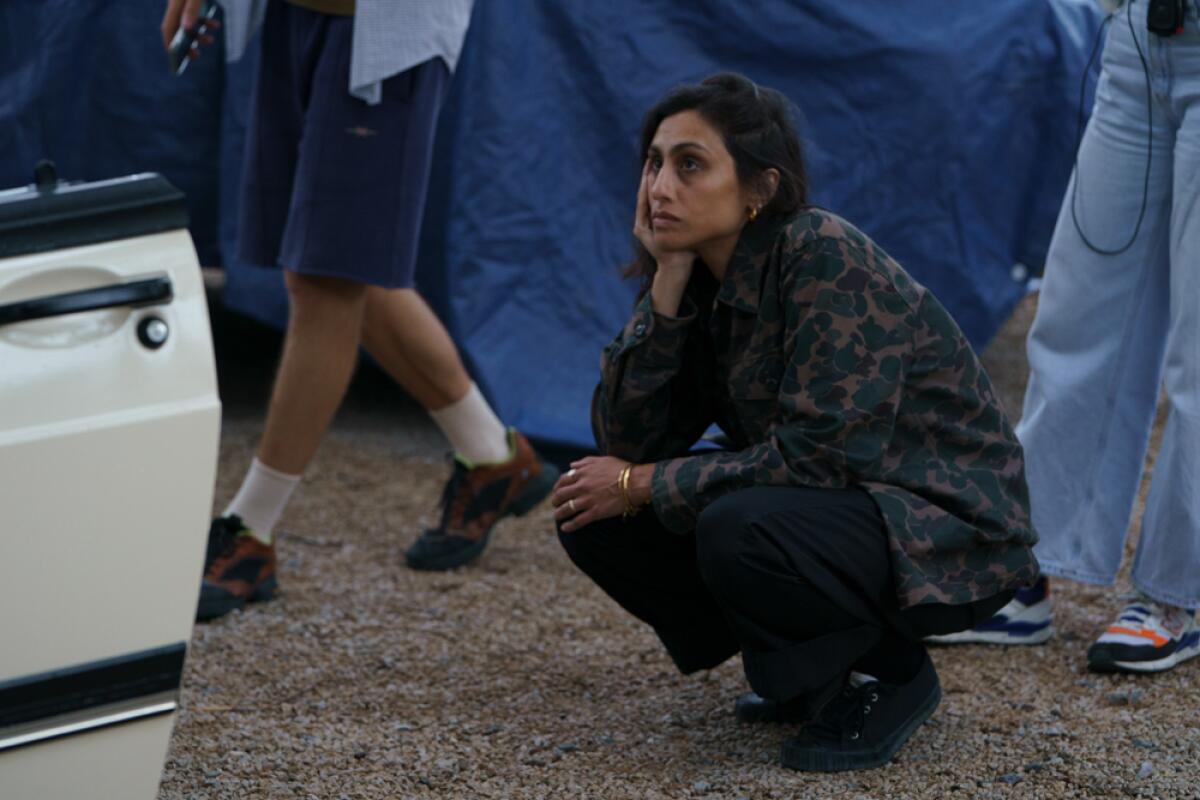
I also spoke to Durga Chew-Bose, a celebrated author who is making her film directorial debut with a contemporary adaptation of “Bonjour Tristesse” starring Lily McInerny, Claes Bang and Chloë Sevigny.
Chew-Bose admitted she was reluctant to take on the project when she was first approached about itbut came to realize, “I felt there was room there to impart my voice. And so, yes, it’s not my original story, but I actually treated the challenge of adapting it as if it were. What can I say? How can I be additive? How can my voice continue the story? Not just the Françoise Sagan book but even the Otto Preminger version. That is a huge part of the book’s iconography. It’s not just that it was this major book, it was a major film with major stars. So I really kind of see it like: Our ‘Bonjour Tristesse’ is sort of a continuation of that history.”
Ashley Lee spoke to Anderson .Paak about his feature directorial debut, “K-Pops,” in which he appears along with his son Soul Rasheed in the story of a drummer who finds his long-lost child. On working with his own son, .Paak said, “I was a little nervous that he might not want to do it because he’s got to wake up for these crazy call times, do choreography classes and really learn on the spot. Also, movies take so long to make. He got older and we had to adjust the script on certain things so it also made sense for him and could be something he could be proud of too. I didn’t want him to watch it, say it’s cringe, never want to do this again and really regret it.”
And the team of Joshua Rothkopf, Josh Rottenberg and Glenn Whipp wrapped up their coverage of the Telluride Film Festival by listing their seven favorite films, including Edward Berger’s “Conclave,” RaMell Ross’ “Nickel Boys” and Tim Fehlbaum’s “September 5.”
‘Burden of Dreams’ in 4K

On Saturday, the Academy Museum will hold the Los Angeles premiere of a 4K restoration of Les Blank’s 1982 documentary “Burden of Dreams,” which chronicles the notorious making of Werner Herzog’s film “Fitzcarraldo.” In telling the story about a man attempting to access untapped resources of rubber in the Amazon, Herzog had a 320-ton boat manually hauled up and over a hill in the jungle. The film ranks among the greatest portraits of artistic folly and plain madness ever captured on film. Herzog and Les Blank’s son, Herrod Blank, will be at the screening.
In his original Times review of “Burden of Dreams,” Kevin Thomas noted that the film “emerges as one of the best, most comprehensive studies of a filmmaker at work ever made, posing the question: What price art?”
In a 1982 Times profile of Blank written by Michael London, Blank said of Herzog, “Toward the end, I really began to wonder why he was gong to so much trouble. I knew why I was — because he was.” Elsewhere Blank said that comparing “Burden of Dreams” to “Fitzcarraldo” was comparing apples to oranges, noting, “My film may be a very good apple, I think his is a very good orange.”
‘Geronimo: An American Legend’ in 70mm
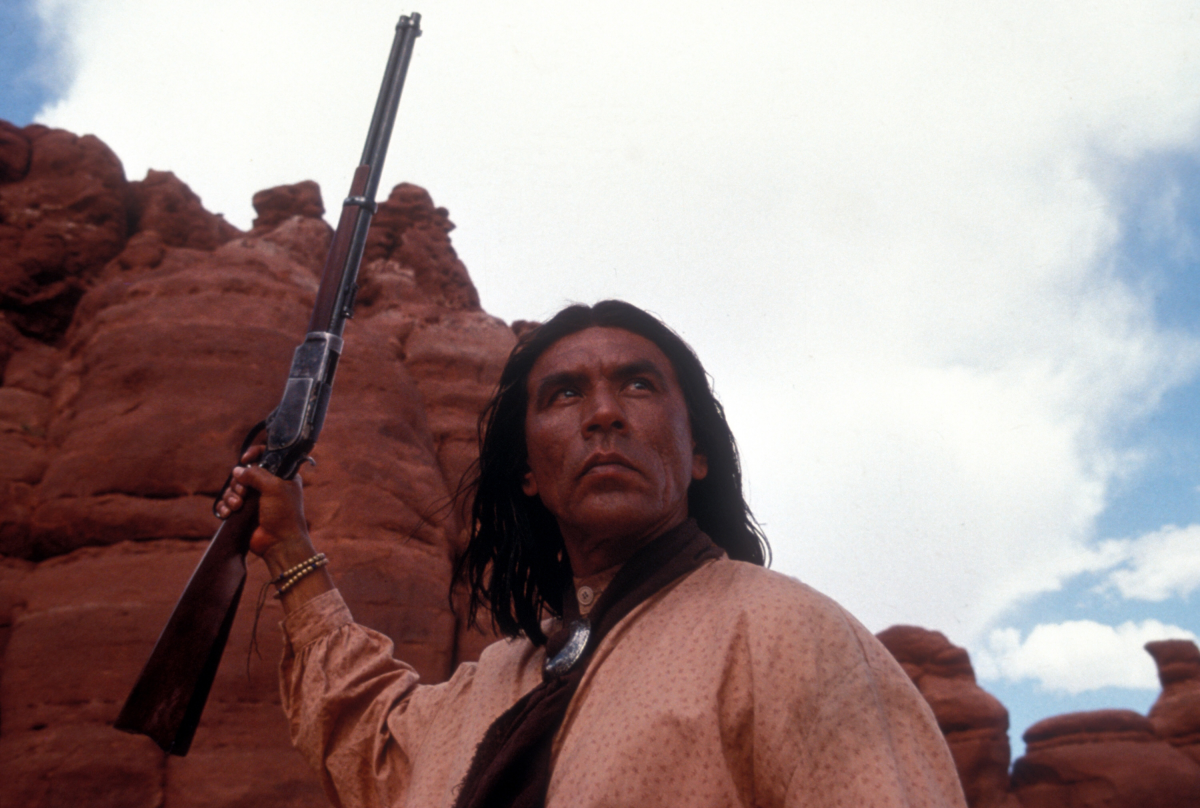
On Sunday, the Academy Museum screens Walter Hill’s 1993 “Geronimo: An American Legend,” from a screenplay by John Milius and Larry Gross, in 70mm. Starring Wes Studi as the Apache leader of the film’s title, it is a surprisingly nuanced look at the American Indian Wars with a cast that includes Jason Patric, Robert Duvall, Gene Hackman and Matt Damon.
In his review at the time, Kenneth Turan wrote, “A handsome and respectful Western that wants to simultaneously echo and modernize the myths of the past, it is an impressive piece of work that, perhaps inevitably, ends up being more than a little cold around the heart.”
In a Times Q&A at the time of release with Jane Galbraith, Studi said he wasn’t afraid of being typecast in historical Native American roles. “I’ve played a type,” he said. “Maybe there’s now a Wes Studi type, which is one step away from being unknown. I can’t take offense at that.”
Points of interest
‘My First Film’

On Saturday, Now Instant Image Hall will present a screening of Zia Anger’s “My First Film” followed by a Q&A with the filmmaker. (The film also is streaming on MUBI.) Based on Anger’s own experiences, “My First Film” is a complex piece of autofiction, one that follows Vita (Odessa Young) as she recounts the making of a semiautobiographical film starring her friend Dina (Devon Ross) and working with an inexperienced and often unreliable crew. “My First Film” is based on Anger’s experience of making her own lost project, titled “Always All Ways, Annie Marie.”
In a Q&A as part of the press notes for the film, Anger explained what drew her back, noting, “I have been trying to make feature films since 2010 and, to be honest, this is the first one that had a lot of momentum behind it. You have to make one film to make another, so I did it.”
‘Jackie Brown’
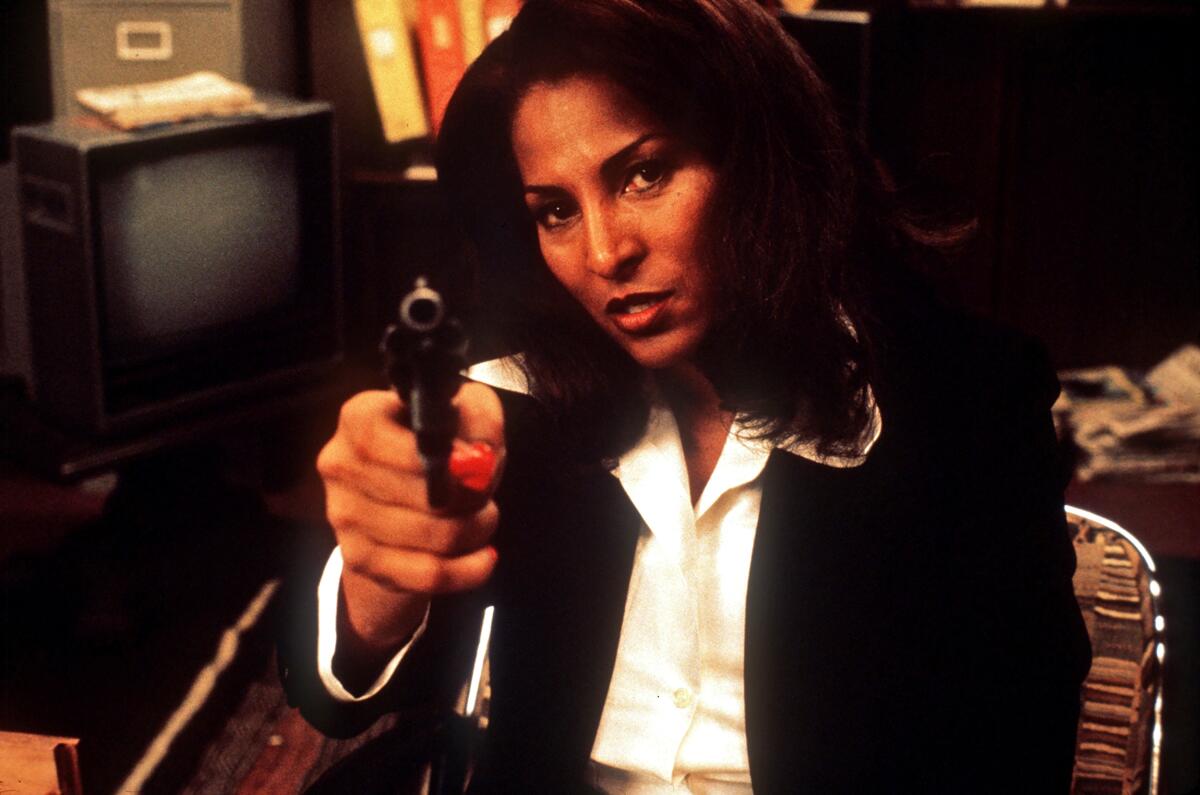
The New Beverly will be screening Quentin Tarantino’s personal 35mm print of his 1997 film “Jackie Brown” every Friday in September at midnight. I particularly like the idea of reframing “Jackie Brown” as a midnight movie simply because I personally think of it as a middle-of-the-day movie, one you can relax and hang out with.
Coincidentally, the Vista Theater (which of course is also owned by the filmmaker) will screen Tarantino’s personal 16mm print of “Reservoir Dogs” in its Video Archives Cinema Club room on Saturday and Tuesday.
Lovingly shot in L.A.’s South Bay, “Jackie Brown” stars Pam Grier as a flight attendant for a low-rent airline who finds herself entangled with local gangster Ordell Robbie (Samuel L. Jackson) and in need of a bail bondsman. Enter Max Cherry (Robert Forster), a helpful presence and then, maybe, something more. Based on a novel by Elmore Leonard, the film becomes a fun who‘s-fooling-who caper while also being a ruminative meditation on middle age. Robert De Niro and Bridget Fonda have fantastic supporting roles, while Michael Keaton shows up to play the same dimwitted FBI agent as in Steven Soderbergh’s Leonard adaptation, “Out of Sight.”
Reviewing the film when it first came out, Kenneth Turan was not fully convinced, writing, “The result is a raunchy doodle, a leisurely and easygoing diversion that goes down easy enough but is far from compelling. … [Tarantino has] relaxed so much he hasn’t given this film more than attitude, and even attitude can wear thin after a while.”
‘His Three Daughters’
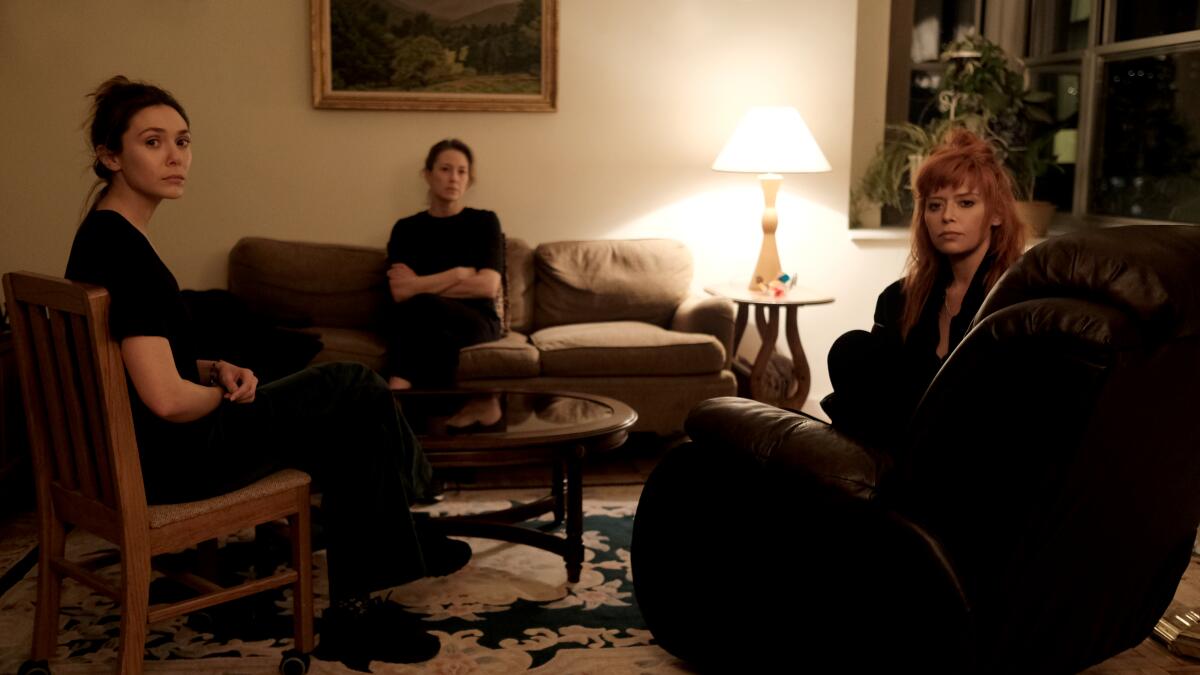
One of my favorite films at TIFF last year was Azazael Jacobs’ “His Three Daughters,” starring Natasha Lyonne, Elizabeth Olsen and Carrie Coon as three sisters who are reunited in their father’s apartment as they wait for him to die in hospice care.
Jacobs’ previous features include “Momma’s Man,” “The Lovers” and “French Exit,” and he has more recently directed television. “His Three Daughters,” besides being a platform for three powerhouse performances from an outstanding trio of actors, has a sense of control that feels like a real evolution for Jacobs as a filmmaker.
The film is in theaters now. Beginning on Monday, the Egyptian Theater will showcase a series of films that influenced Jacobs in creating his latest work, including Eric Rohmer’s “Boyfriends and Girlfriends,” Alan Parker’s “Shoot the Moon,” Dennis Hopper’s “Out of the Blue,” Peter Hedges’ “Pieces of April” and Michael Roemer’s “The Plot Against Harry.” “His Three Daughters” will screen in 35mm on Sept. 25, along with a Q&A with Jacobs and producer-costume designer Diaz Jacobs. (“His Three Daughters” also will screen on 35mm at the New Beverly Sept. 13-15 and start streaming on Netflix Sept 20.)
For a story I will be publishing on the movie soon, I spoke to the three lead actors and Jacobs. The director told me, “It was definitely the film that I’ve been most exacting in everything that I planned. I don’t think I’ve had the ability before to pursue the kind of precision that I wanted with this one. “
‘No Fear, No Die’
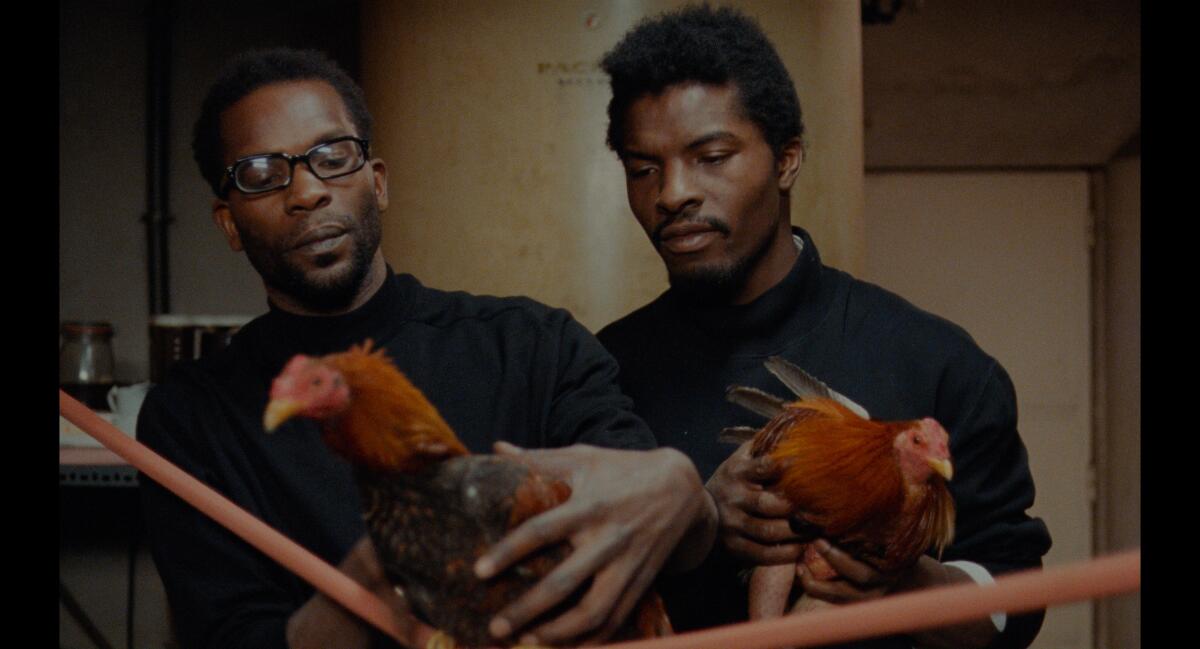
On Tuesday, Mezzanine will present the West Coast premiere of a 4K restoration of Claire Denis’ 1990 film “No Fear, No Die.” The film was shot by Denis’ frequent collaborator, cinematographer Agnès Godard, and stars Isaach de Bankolé and Alex Descas as immigrants to Paris who fall in with an illegal cockfighting ring.
Writing about the film recently in the New Yorker, Richard Brody said, “The film is Denis’s first masterwork, and it set the tone for her best work to come. In the course of her wide-ranging career, one of the most illustrious in the current cinema, Denis’s concern for social critique has sometimes overwhelmed curiosity, and her control of tone and effect sometimes inhibits spontaneity. In ‘No Fear, No Die,’ her copious and nuanced observations, her aesthetic sensibility, and her analytical world view are unified. She films as if she is a part of the world she films, as do the best modern documentarians; her fiction, here, conveys a sense of immediate experience, a feeling of freedom.”
Only good movies
Get the Indie Focus newsletter, Mark Olsen's weekly guide to the world of cinema.
You may occasionally receive promotional content from the Los Angeles Times.

